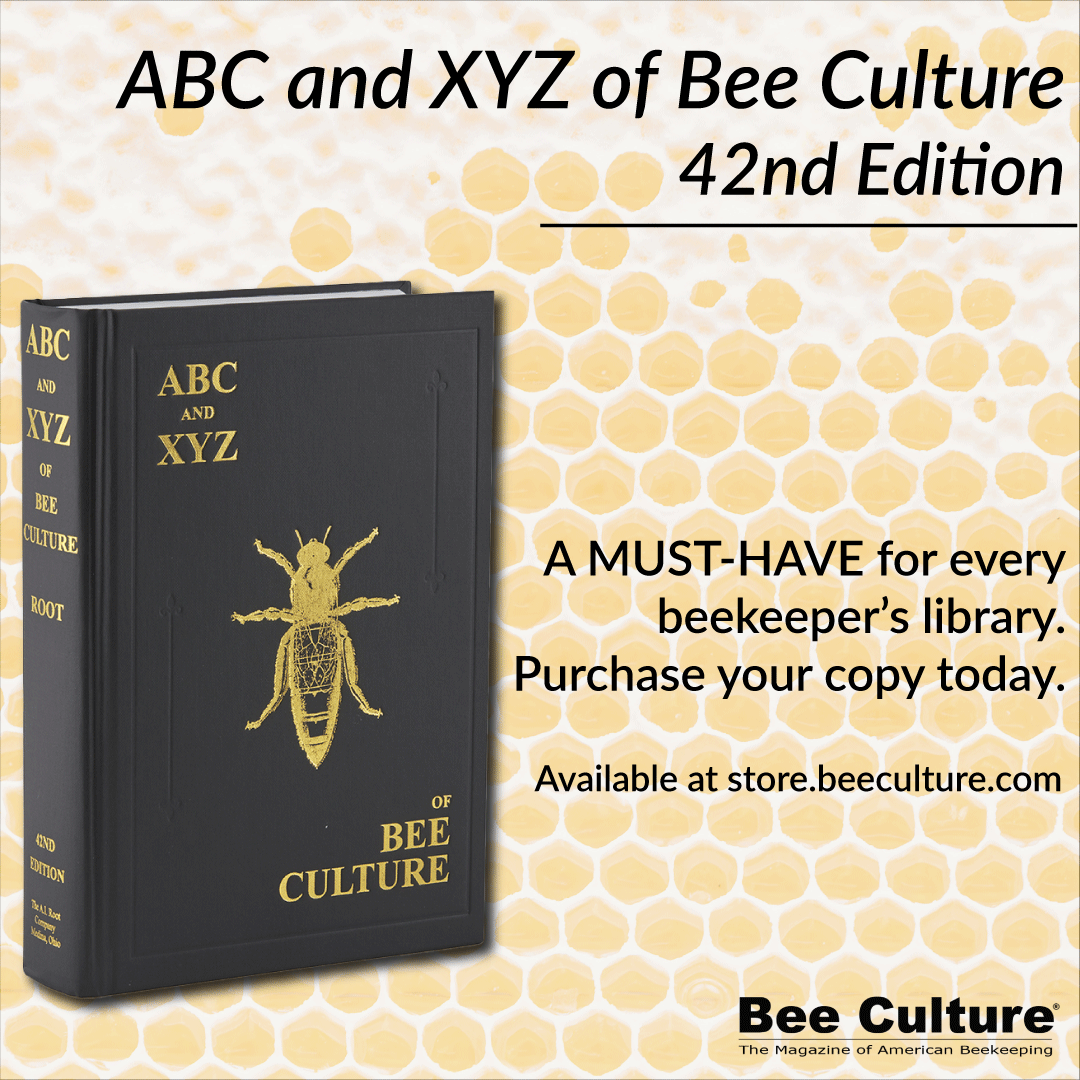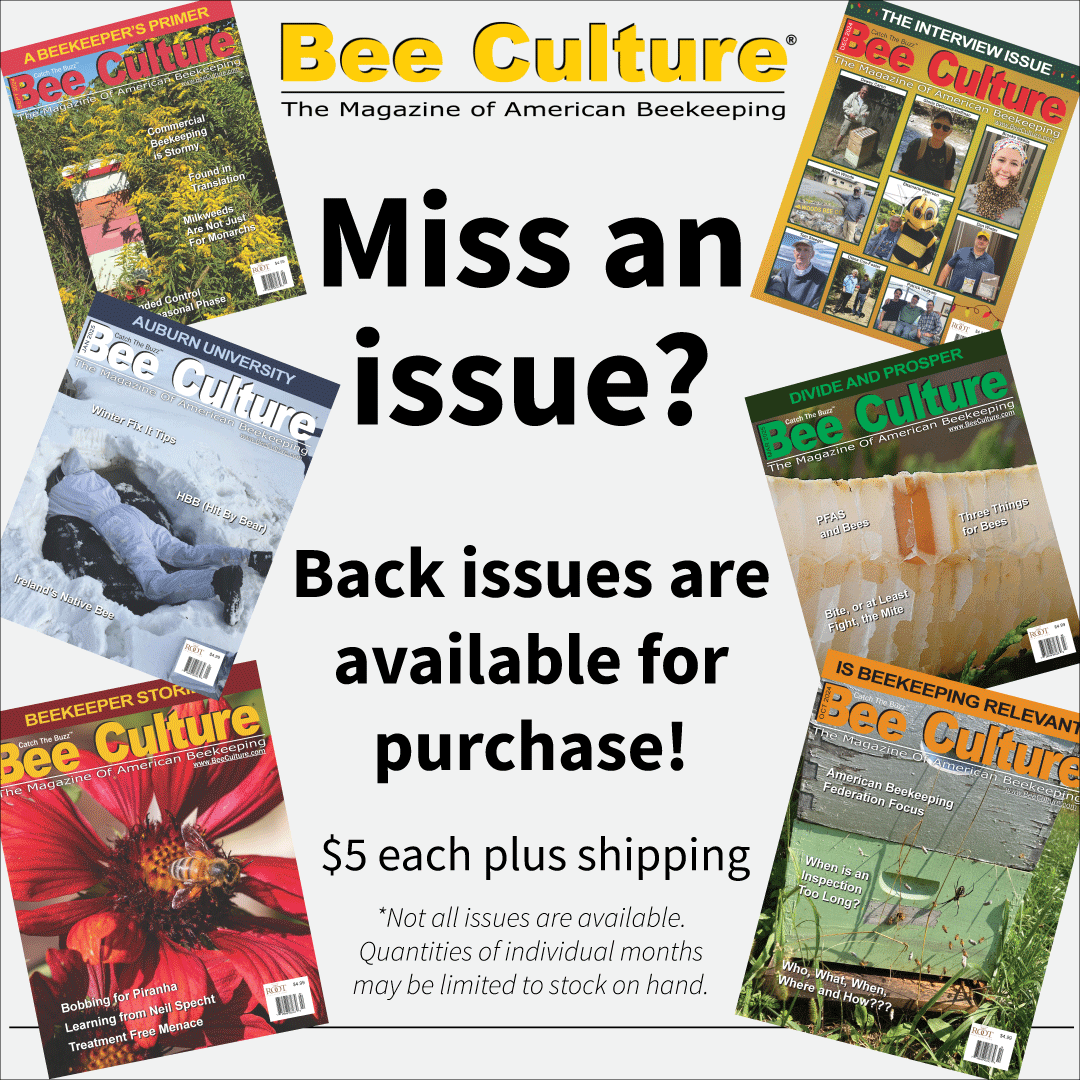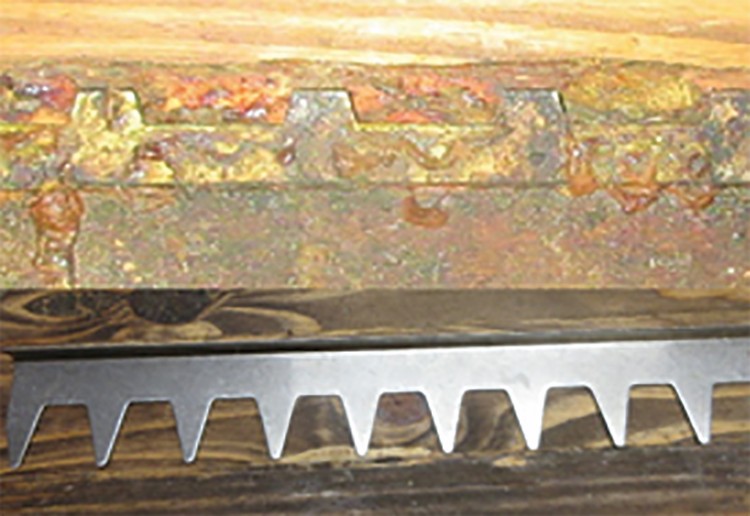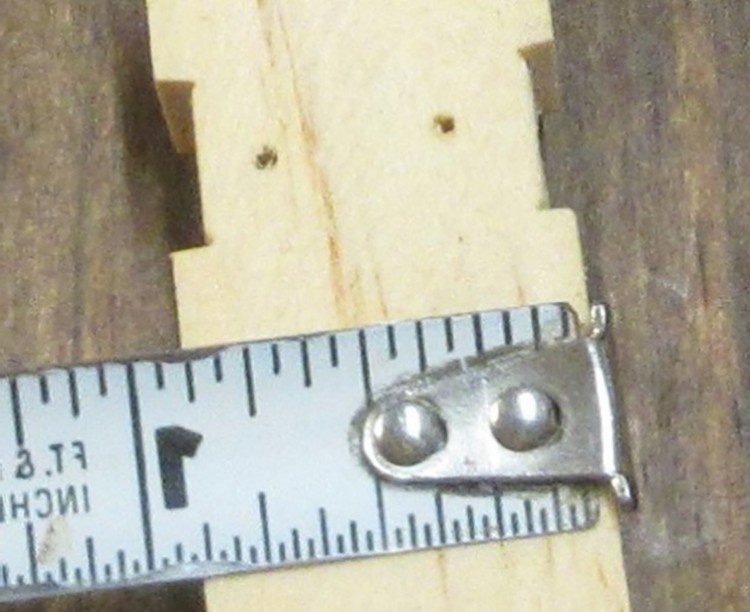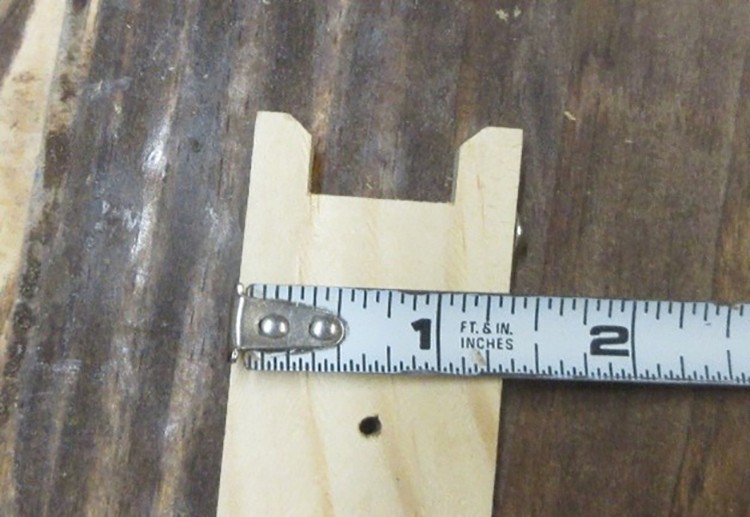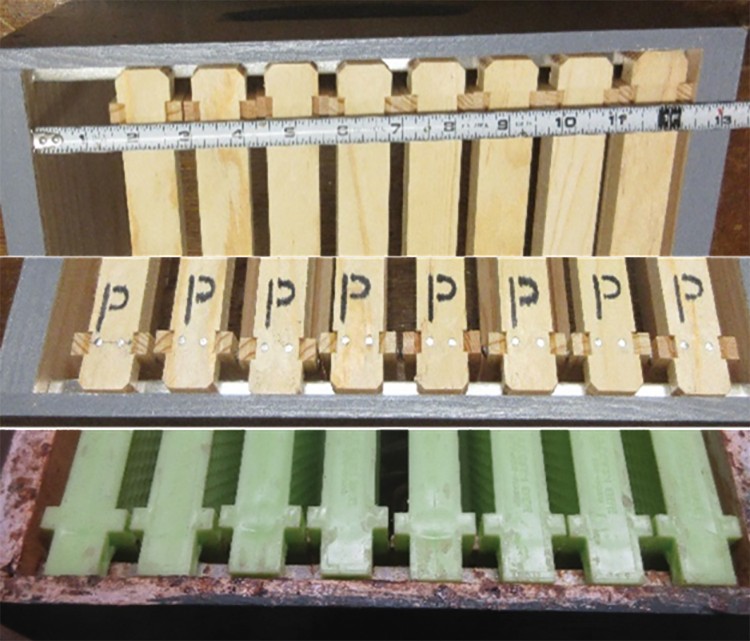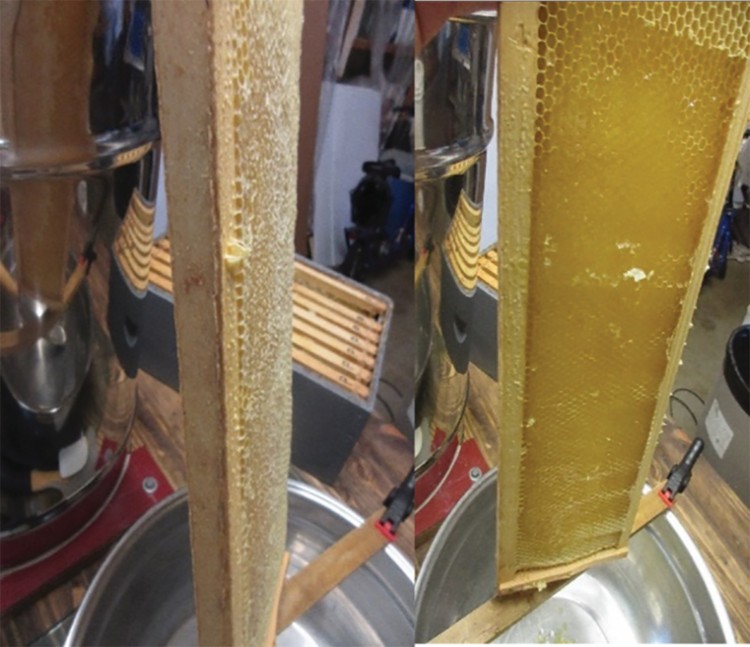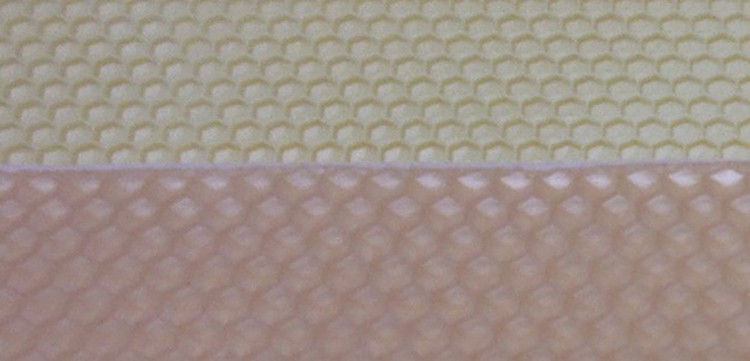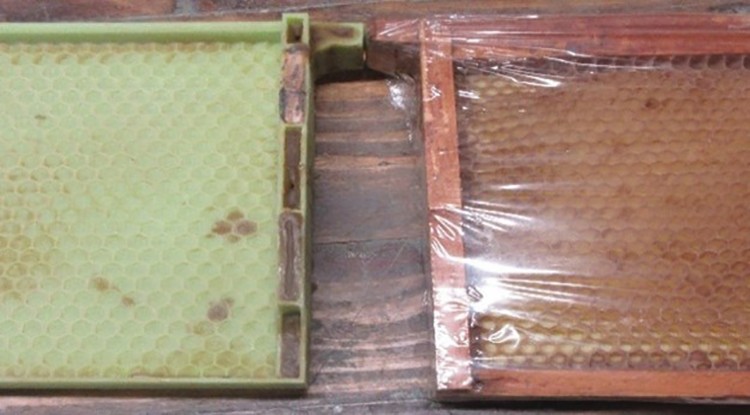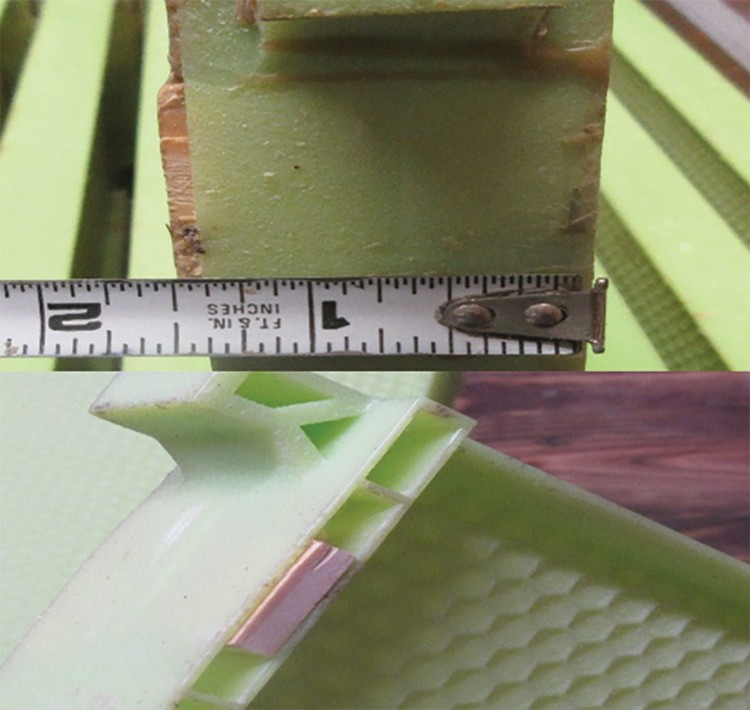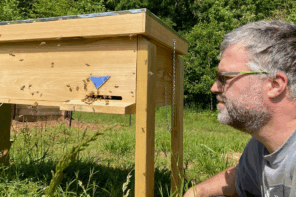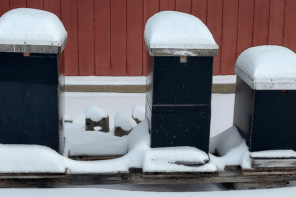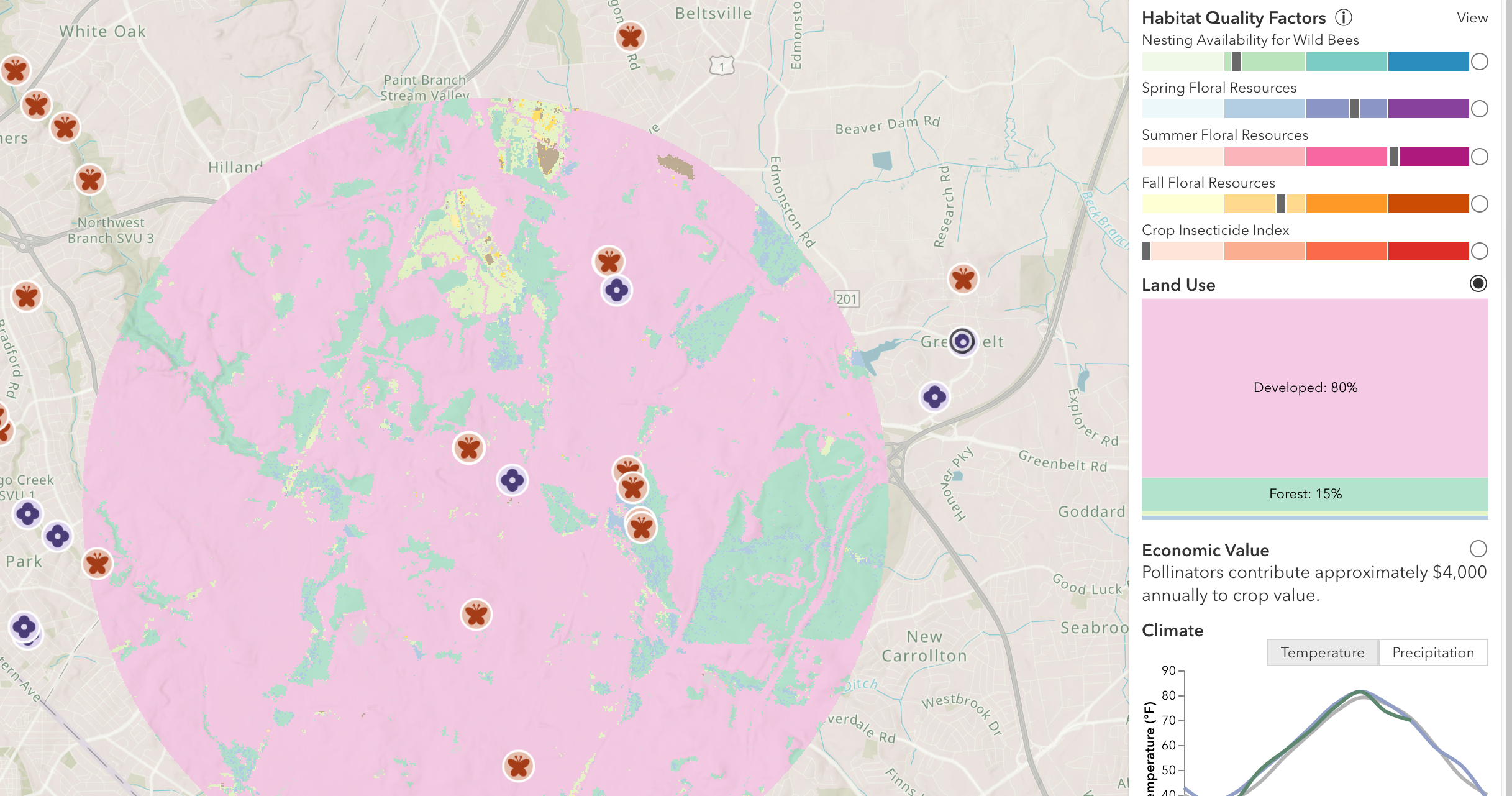Same Honey – Less Equipment
Greg Carey
“A penny saved is a penny earned.” – George Herbert
Unless you have been in my garage or bee yard within the last two years or work in the front office of one of the several equipment suppliers to whom I have sent this proposal, you probably have never heard of the Proud Frame concept. The Proud Frame is a way for beekeepers to reduce the number of supers and frames in their inventory by 15 to 30 percent while harvesting the same amount of honey. Let me explain using some round numbers, so you can visualize its impact on your operation whether you are a large commercial beekeeper or a backyard hobbyist. If you run 1000 ten-frame hives with four medium supers on each and your Proud Frame advantage is 25% then you will reduce your equipment inventory by 1000 supers and 10,000 frames. That is 10,000 fewer frames to uncap, extract, and store. If you stack 100 supers on your truck, that is 10 less truckloads. If your extractor holds 20 frames that reduces your extractor runs by 500. You get the idea, and hopefully it gets your attention and keeps the editor from accusing me of burying the lead. Before I forget, the primary element that took me down this path was to get a Frame of Proud cappings that could be easily uncapped with the hot knife in one swipe. It does this. This is an exceptionally good approach to getting the greatest yield from honey supers in the most efficient way possible.
Background
When I first got into beekeeping in 2008 the beekeepers in this area all used 10 frame Langstroth equipment, so that is how I kept my bees in the beginning. When we discussed the weight of the equipment many beekeepers recommended only putting nine frames in the hive bodies and supers. They sold this as a weight reduction and a benefit to uncapping as the bees would draw the super combs proud above the frame top bar, making it easier for the knife to reach the cappings across the whole frame. They also liked to point out that the supers would hold more honey due to the tenth frame not taking up space that is now filled with drawn comb. Yet another benefit was that you only needed to extract nine frames instead of 10.
The practice of using nine frames in a 10 frame super required you either place the frames in position by best guess for distance, use a frame spacing tool, or install special, permanent frame rests which locked the frames in place.
Analysis of One Less Frame
First, let’s look at the points that contradict and defy logic, weight saved due to reduced frames and more honey per super due to the removed frame. We cannot have it both ways as clearly honey weighs more than wooden frames.
The next one is that the bees put more honey into a super that only has nine frames versus 10. It increases the frame weight but does not increase the volume of the super. Once we look at the space taken up by the frame in the comb area of a super, we see that removing a frame only clears the space taken by the foundation and capping, almost 3/16th inch. This is not a significant amount of space saved across 15+ inches.
The proud capping is a benefit when using a knife to uncap the frames. You do not need to go back and make several cuts or use a scratcher to open the missed cells. However, the nine-frame spacing allows the bees to draw the cells extra proud, causing more than a small amount of honey to go in the cappings tub rather than the extractor.
As for the benefit of only extracting nine frames instead of 10, my extractor handles four medium frames or two deep frames. This can result with an unbalanced extractor jumping all over the room. Minor when placed across the whole harvest but still.
The placing of the frames into the super at the proper space is no problem if you have the nine-frame frame rest. The frame rest locks them into place but requires you to pick them straight up for removal. Propolis can turn this into a negative. The frame rest install is permanent. Nine frames it is. If you do not have the frame rests and use the frame spacer as I did, or just depend on your judgement without the spacer, your initial replacement of the frames after an inspection requires more than a little care. It is amazingly easy to press the bees into the comb surface when you have sacrificed the frame-shoulder bee space protection. Honestly, I did this more than I care to admit.
Finally, I have long since converted to using eight-frame equipment due to the weight and have never heard an acceptable discussion on how to get proud comb drawn in other than 10 frame equipment.
Proposal
The Proud Frame conversion consists of three adjustments to your current wooden frame design that are quite simple to implement. The changes can be used on ALL future frames, regardless of size, without affecting their use in current applications in conjunction with old stock and inventory. You can replace current frames through normal attrition without worry. You may wish to continue the nine-frame practice. The Proud Frame will not interfere with that practice even though it has made it obsolete. You will be able to intermix the Proud Frame with older style frames without concern as the shoulders will continue to set bee space and prevent bees from being caught and mashed into the comb.
Steps to convert a wooden frame into the Proud Frame
Top Bar
Your current top bar measures one inch in width. The Proud Frame top bar measures 7/8 inch in width. I used the table saw to remove 1/16 inch from each side of the top bar. This is needed for proud comb.
End Bar
Your end bar width measures 1-3/8 inch. I increased the effective width of the Proud Frame end bar by 1/8 inch to 1½ inches.
I used a small wood screw on one side of the end bar with an 1/8-inch head space. The screw allows for adjustment in width. By placing the screw on opposite sides of each end of the frame, you only need two screws per frame, and the frame can be placed into the super without worry of direction. This is needed for proud comb and increased capacity.
Available Space
You see the space available that will be used for honey in an eight-frame medium super before and after the modification.
Inside body width: Proud Frame width:
10 Fr – 15 ½” 10 Fr – 15”
8 Fr – 13 ¼” 8 Fr – 12”
5 Fr – NUC – 8 7/8” 5 Fr – 7 ½”
Note: Your body width may vary, but none that I have found are less that the Proud Frame requirement.
Uncapping
Here is a frame chosen because it is not completely drawn out. You will notice that even the uncapped cells are drawn above the top bar width. You will also notice that the cells are not drawn so far above the top bar as to cause excessive honey going into the cappings tub. This is a first year super drawn from plastic foundation (more on that later).
Did You See That?
Our simple modifications achieved the goal of having cappings that are easily removed with the knife, but there was a little thing harder to see. The shoulder screws on each frame used an extra 1/8th inch of the inside super space which the bees filled with honey.
The Math
When I did a search on the weight of a medium frame of honey, the prominent answer was six pounds. When I calculated the weight using my 20 oz. per pint honey, I came up with 6.19 lbs. of honey in an unmodified frame. The delta may be due to wax displacement, rounding, or internet variation. The 1/8th inch increase in honey storage will add one pound of honey to each frame or eight lbs. per eight-frame super. The super yield goes from 48 to 56 lbs. 56/48=1.167
Foundation
I know that changing the foundation is not an actual frame modification, but this is one of the elements mentioned earlier. For the life of me I cannot understand why no one has talked about this as a means of increasing honey capacity in the super, making the drawing of honeycombs more efficient, and increasing the extraction yield with less work. Maybe it is out there, and my few years have not been able to find it. I have queried many suppliers, and none offer the medium plastic drone foundation. So, I put this before you for extra serious consideration.
We need plastic foundation for medium frames with drone size cells imprinted on it!
Here is why!
This photo shows there are significantly fewer cells in the same area of drone comb as compared to worker comb. Those reduced cells mean reduced cell walls that the bees must draw out. It also means less cell walls taking up space that will hold honey. Finally, it means less surface area for the honey to stick to during extraction, making extraction much more efficient. Having this configuration foundation in plastic would provide honey producers a rugged foundation that the bees can more efficiently draw out and from which the extractor can easily squeeze the last drop.
Many have done considerable work compiling information on comb drawing that is well worth our time to study and understand. The focus to some extent seems to be reducing cell size in the brood nest area to achieve a natural sized honey bee by reducing the spacing of the frames. Most of the early studies also focus on reducing the cell size to prevent the production of those worthless drones in the brood nest. Historically drones were not encouraged for IPM purposes or for queen rearing for that matter. Drone cells were bad! But let’s be clear. We are talking about frames for more profitable honey production, a reduction in equipment and operational costs. These frames can be used in the brood nest with worker foundation for brood production or with drone foundation for drone production, but we are focused on honey production, and since there are roughly 55-79% (depending on the cell sizes used) more worker cells than drone cells per frame, we wish to relieve our workers from drawing all those cell walls on honey frames. Every talk I have heard on drawing wax makes the point that it takes eight pounds of honey to make a pound of wax.
Unfortunately, the only drone cell foundation I have found is wax foundation for deep frames (I cut these for my purpose) and plastic frames for Varroa control. One producer suggested I buy their plastic drone frames and cut out the foundation to use in my wooden frames. I have not yet arrived at that logic.
Wooden Frame Summary
The primary advantages for the Proud Frame in implementing the first two changes to the wooden parts of the frame are that the cappings will be proud just above the edge of the top bar, allowing for a smooth cut of the cappings with very little honey falling into the cappings tub and the increase in cell height which yields more honey per frame (1/8th inch/frame) by using super space that is not used by the standard frames.
My honey on average weighs 20 ounces per pint or .7 ounces per cubic inch. If I add 1/8th inch of honey to a medium frame with a comb area of 89.25 square inches and ignore the cell walls, that equals 11.15 cubic inches or 16 additional ounces of honey per medium frame.
The Proud Frame, with the addition of drone-cell foundation, will slightly increase the amount of honey per frame and greatly relieve the honey bees of the need to draw out all the cell walls for worker sized cells.
The Proud Frame concept delivers all the positive attributes of running nine frames in a 10-frame super while relieving the need for any special consideration or support, i.e., frame rests, spacer gigs, or bee crushing due to frame movement. The Proud Frame concept can be easily used in all sized equipment and is not limited to the 10-frame configuration.
The Proud Frame is completely interchangeable with standard frames and can be used as such with no worry to the beekeeper.
Plastic Proud Frames
We are at the bee meeting, and someone asks what is the main purpose of the frame? The grizzled beek in the back blurts out that that is what the bees live on. We all nod in agreement and couldn’t be more wrong.
The bees DO NOT live on the frame; the bees live on the COMB!
The frame is a rigid device (skeleton) used by the keeper to handle the comb for inspection, honey harvesting, making splits, balancing stores and brood between colonies, etc. The keeper needs that rigid skeleton, the bees do not. The less space taken inside the hive by the frame the more space for comb.
Plastic Frames
This discovery surprised me.
The first thing noticed when picking up a plastic frame is that its skeleton is significantly thinner than a wooden frame.
This means there is more space for comb building inside the frame skeleton.
Current Frame Measurements
Standard Plastic Drone Frame
OD – 6 3/16”x17 5/8”
ID – 5 15/16”x16 15/16” equals 100.56 sq.in. or 7.12 lbs. of honey
Standard Wooden Worker Frame
OD – 6 ¼”x17 ¾”
ID – 5”x16 15/16” equals 84.69 sq.in. or 6 lbs. of honey (Proud Frame Upgrade 7 lbs.)
The standard plastic frame has more honey storage space than the wooden frame that is upgraded to the Proud Frame.
The plastic frame is resistant to modification, but the top bar measures at 15/16”. Not the desired 7/8” but less than one inch.
The end bar width measures the same as the wooden frame at 1-3/8 inches. We need the end bar to be 1½ inches.
I used a wooden insert to increase the end bar width by 1/8th inch. I placed another flush insert into the opposite side of the end bar to prevent the long insert from locking into the adjacent frame.
By placing the long insert on opposite sides of each frame end, the same as the screw on the wooden frame, I accomplish a frame which cannot be placed into the super backwards. It works and maintains space regardless of the orientation. In the photos you see that I used propolis and bees wax to fix the insert in place.
That adds 1/8th inch more honey per frame, which calculates to 1 extra pound per frame or a total storage gain of 2.12 pounds. Two extra pounds of honey in the same space we currently get six pounds seems significant to me. 65/48=1.35
The Goal
Of course, getting a supplier to offer drone frames with the 7/8th inch top bar and 1½ inch end bars and the same outside dimensions as wooden frames is the goal.
These could be in wood or plastic frame and easily promoted for both honey production and drone production for queens and IPM. Most of what I have found concerning durability of wood versus plastic has been anecdotal and suggests that wood is more inclined to come apart. However, I know that there is more than one abusive way to uncap a frame of honey. These studies are beyond my limitations, and I would be glad to see such but will continue to use the knife.
I would also like to see plastic drone cell foundation offered in all frame sizes and know that there is a market for this.
”
A supplier offering drone frames with the 7/8th inch top bar and 1½ inch end bars is a given. I can even see a market for a plastic insert for the current plastic frame end bars to increase the width to 1½ inches.
Finally, the benefits I see are easier, more thorough extraction of drone cells. The fact that it takes less wax to draw out a drone frame using less honey and less bee time. The cappings proudly project above the top bar for easy uncapping. Without a special rest or spacer, the frame uses previously empty super space for an extra 1/8th inch of honey per frame and reduces your super requirement by 15 to 30 percent depending on the Proud Frame advantage, reducing the equipment and labor costs. I cannot imagine a single honey producer who would not agree that each of these are beneficial.
The reason your Proud Frame advantage is variable is because each part of the modification is independent of the others and can be implemented individually, top bar, end bar, drone cells, plastic frame.
It is better to reduce your costs than to raise prices. Feel free to use this to make your own Proud Frame or wait on a supplier to pick up on this. You know your strengths.




